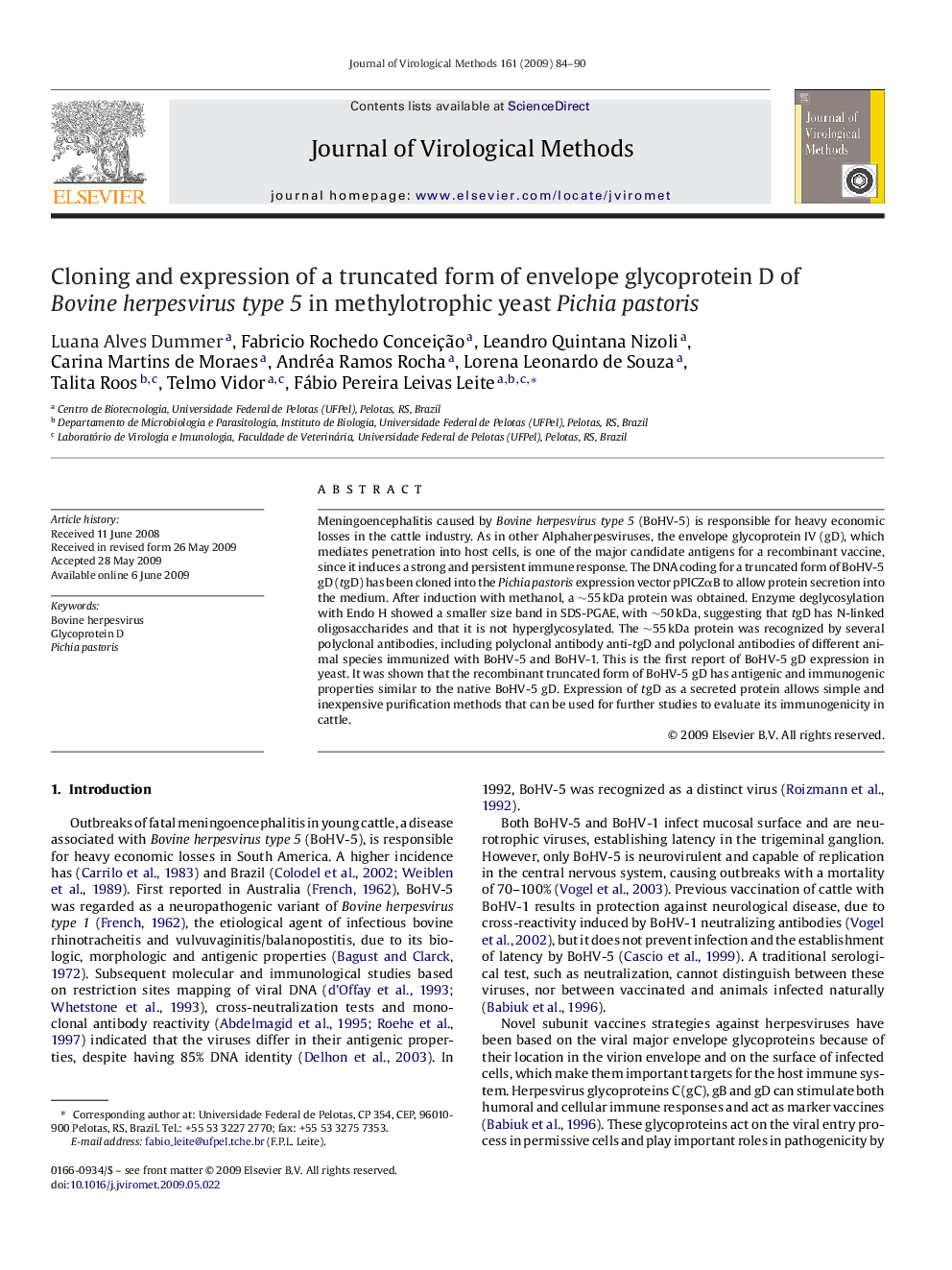| Article ID | Journal | Published Year | Pages | File Type |
|---|---|---|---|---|
| 3407390 | Journal of Virological Methods | 2009 | 7 Pages |
Meningoencephalitis caused by Bovine herpesvirus type 5 (BoHV-5) is responsible for heavy economic losses in the cattle industry. As in other Alphaherpesviruses, the envelope glycoprotein IV (gD), which mediates penetration into host cells, is one of the major candidate antigens for a recombinant vaccine, since it induces a strong and persistent immune response. The DNA coding for a truncated form of BoHV-5 gD (tgD) has been cloned into the Pichia pastoris expression vector pPICZαB to allow protein secretion into the medium. After induction with methanol, a ∼55 kDa protein was obtained. Enzyme deglycosylation with Endo H showed a smaller size band in SDS-PGAE, with ∼50 kDa, suggesting that tgD has N-linked oligosaccharides and that it is not hyperglycosylated. The ∼55 kDa protein was recognized by several polyclonal antibodies, including polyclonal antibody anti-tgD and polyclonal antibodies of different animal species immunized with BoHV-5 and BoHV-1. This is the first report of BoHV-5 gD expression in yeast. It was shown that the recombinant truncated form of BoHV-5 gD has antigenic and immunogenic properties similar to the native BoHV-5 gD. Expression of tgD as a secreted protein allows simple and inexpensive purification methods that can be used for further studies to evaluate its immunogenicity in cattle.
